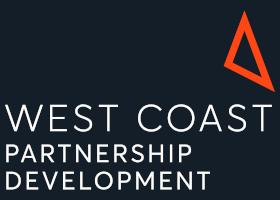
BLOG - “It takes you out of your day-to-day, and exposes you to new ideas.”
WCPD Head of Stations, Matt Cope, talks about the value of benchmarking our plans against existing European high-speed rail operations.
In their work to shape the UK’s new high-speed network, WCPD colleagues are visiting other countries to see first-hand how other major railways are run. Head of Stations, Matt Cope, highlights the importance of this in his role to shape the stations of the future.
An important part of our work at West Coast Partnership Development is to go to other countries to benchmark our plans and ideas against their existing railway operations. This is vital in my role as Head of Stations, as I want to bring together many ideas and existing ways of working to ensure that we deliver the best experience for our customers.
I look at how customers interact with a station – from wayfinding to the use of station facilities and amenities. In addition, I also plan what facilities our staff will need at stations to be able to run the service. Therefore, there is real value to seeing how the other countries’ railways do it, whilst also understanding their challenges and learning the solutions they’ve implemented.
I have been fortunate enough to visit Italy and The Netherlands to see first-hand what their railways provide for customers – from the train service itself, to what is available at the stations. I found that the trips have reinforced the value of benchmarking. For me, it takes you out of your day-to-day and exposes you to new ideas. We all have pre-determined thoughts of how a high-speed railway could be run and these trips gave us new considerations and ways of thinking for our plans. At WCPD, we want the UK’s new high-speed railway to be internationally renown, so it is imperative that we learn from others.
My trip to Italy last year was part of the wider engagement with our part-owners Trenitalia, who are supporting the design of our high-speed services, bringing with them over two decades worth of experience. They provide a wealth of knowledge to our business, and it was great to see behind-the-scenes of their iconic Frecciarossa high-speed service. Italy run a fully integrated rail network, where high-speed routes connect into regional lines to serve cities and communities. We are doing something similar with the HS2 route, so it was fascinating to understand their operations. The stations at Bologna (above left) and Roma Termini were great examples of major railway developments, and I was able to understand how the front-line teams work, how customers move through the station and also how they do accessible travel effectively.“There was a real priority on customer information by making it visible and easily accessible for all.”
This year I visited The Netherlands to see the stations at Amsterdam, Utrecht and Rotterdam (below left). I was seriously impressed by the transport integration with rows upon rows of cycle spaces and easy connectivity for customers using local buses or trams. Furthermore, I loved the community feel of each station. These are massive mainline city stations, but they have been planned to play a role for the locals, for example Rotterdam station has a library.
We were shown around by ProRail, who are the Dutch equivalent of Network Rail, and the country’s main train operator, NS - Nederlandse Spoorwegen. NS are in fact one of the busiest rail operators in Europe, so it was really insightful to observe how they managed crowds of customers passing through the station every day. I noticed that there was a real priority on customer information by making it visible and easily accessible for all, which I loved, and is a massive take-away for me.With HS2, we are looking at a seamless customer experience, even for those that will be using the existing stations on the West Coast Main Line. For the new ones – London Euston, Old Oak Common, Interchange and Curzon Street, we need to understand the different needs of our future customers as well as finding the local opportunities for these hubs to be integrated into their communities. We have a great opportunity to bring innovation into our designs, coupled with all the fantastic insights that we take from benchmarking, to deliver something amazing for our customers and the regions we’ll serve.


